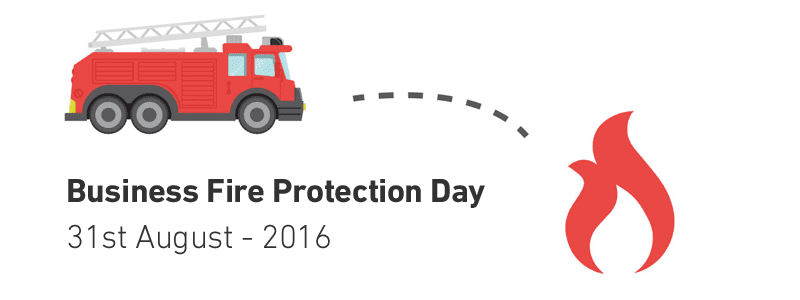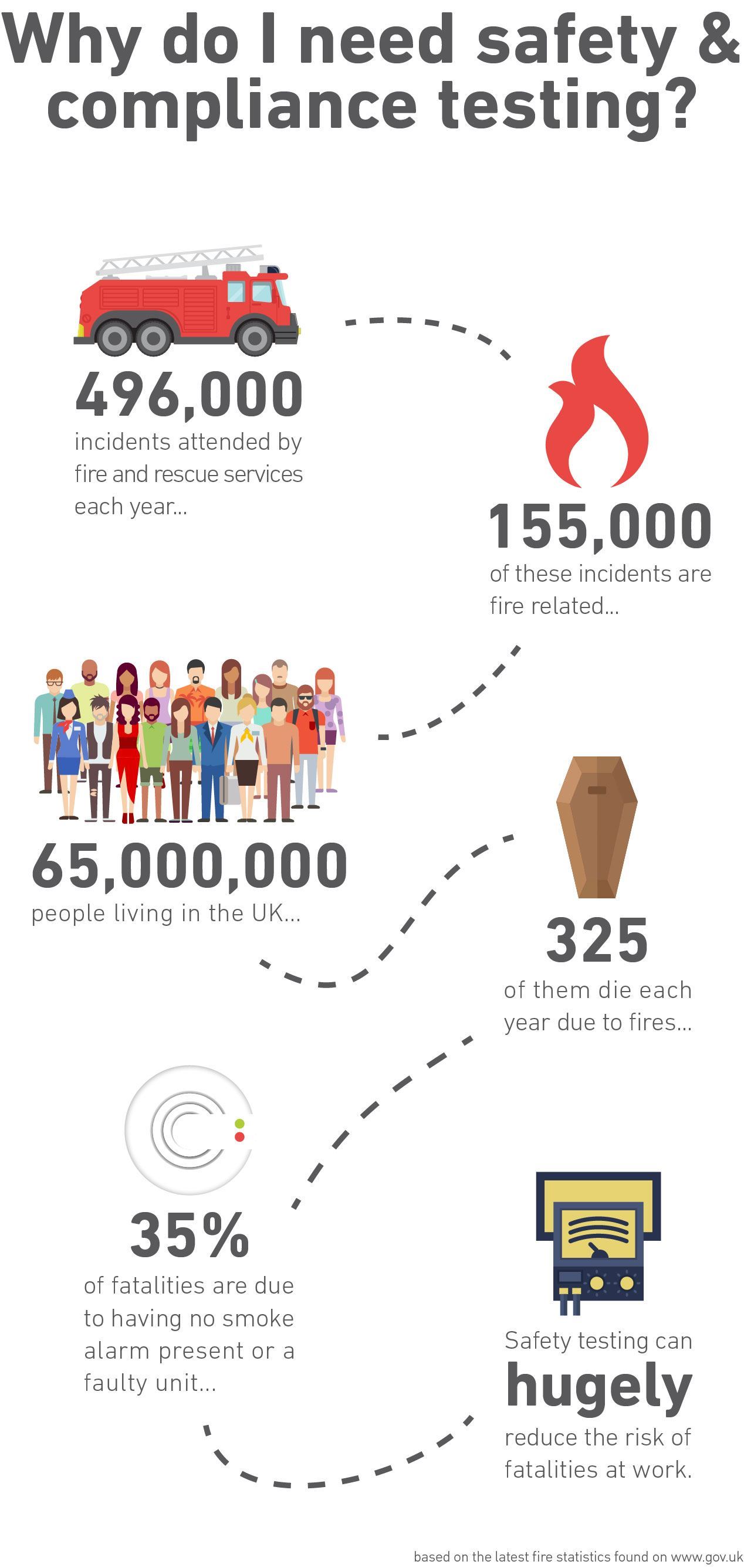The 31st of August 2016 marks the national Business Fire Protection Day awareness campaign, helping to remind and promote businesses to review and polish their fire safety procedures, prevention equipment and reactionary equipment.
Did you know: 35% of fire fatalities are due to having no smoke alarm present, or a faulty unit
Want to know more? We’ve made a handy infographic below:
What should you do as an employer?
It’s up to the building owner or occupier to carry out a fire safety risk assessment and ensure it is up-to-date at all times. The safety of employees, visitors and customers is paramount, and a proper risk assessment helps to reduce the risk of harm.
When conducting a risk assessment, the main things you should be looking out for are:
What could potentially harm people in your workplace.
This can be something as small as a box being left in a corridor causing a potential trip hazard or frayed wires coming from a computer with the potential to seriously injure an employee.
Who could be harmed, and how
What could seem potentially harmless to one person could be much more of a risk to another employee, visitor or customer. For example; stacked cups on the top shelf might not seem an issue to a taller employee conducting a risk assessment, but a small employee overstretching for precariously balanced crockery could result in an accident.
It’s important to note down how employees could be harmed, as well as by what – knowing the possibly circumstances for injury can help with preventing the risk in the first place, and better understanding it.
Evaluate the risks, and decide upon appropriate controls
Assigning appropriate controls, protections and regulations to the risks you find is a critical part of a risk assessment. Not every possible risk can be completely squashed, since walking around in a bubble-wrapped bouncy cancel has its technical troubles. Taking appropriate and sensible measure to ensure that accident happens as little as often is the priority in a risk assessment. Bearing in mind the controls you already have in place, you should evaluate the risks and decide upon controls to minimise them.
Record your risk assessment
Record the findings and actions of your risk assessment is important to ensure that it is documented and able to be viewed and reviewed further down the line. When documenting your risk assessment, it is important to include:
- That proper checks were made
- That all people potentially affected by findings were considered for the actions
- That all significant risks have been assessed
- That the precautions taken are reasonable (Not too lax, not over the top)
- That the remaining risk following your assessment is now low
Review and update your risk assessment
Risks, people, environments and conditions can change daily, making it all the more vital to review and update your most recent risk assessment as and when you feel it is impropriate. There is no set frequency for carrying out a review, however it is recommended that a review or update should be carried out whenever changes are made in the business, be bit new equipment, staff, environment changes and more.
Failure to carry out a risk assessment could result in strong fines for your business. Failure to meet fire safety regulations, for example, could land you with penalties of up to £5000 a year, or more major penalties of up to two years in prison.
What should you do as an employee?
As an employee, it’s important that you know the correct procedures in place at your place of work. Educate yourself on the fire safety code and practice for your business, including where the fire checkpoints are, who the fire wardens are, and how to use basic fire safety equipment.
On a broader scale, it is equally the responsibility of an employee to point out any risks that may occur in the workplace. However minor, it’s important that employees and employers work together to minimise risk at work. Taking a “Someone else will do it” or “That’s not my job” attitude is a dangerous and irresponsible outlook.
You can find out more about conducting risk assessments here:
http://www.hse.gov.uk/risk/faq.htm
Back

